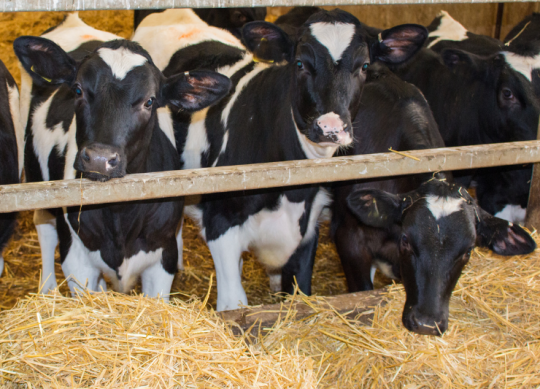USDA SLASHES DAIRY HEIFER HEADCOUNT
With the benefit of hindsight, USDA now believes there were many fewer dairy heifers on hand at the beginning of 2023 than previously thought. In its biannual Cattle inventory report, the agency slashed its estimate of the dairy heifer headcount on January 1, 2023 by 263,600 head. The revised figure shows a steep 367,000-head drop in dairy heifer supplies from 2022 to 2023. The agency reported a modest decline in the heifer head count from early 2023 to January 1, 2024, pegging the U.S. dairy heifer herd at less than 4.06 million head, a 20-year low. USDA also cut its 2023 estimate of dairy heifers ready to calve and enter the milking parlor within the year and reported a further decline for 2024, assessing the maturing heifer herd at just 2.59 million head, the lowest – by far – since the agency began tracking this figure in 2001.
The cost to raise heifers to maturity and rising beef prices have prompted more and more dairy producers to introduce beef genetics into their breeding programs. The consequences are obvious. The industry has completely erased the glut of heifers created by the prevalence of sexed semen in the mid-2000s and the pendulum has swung to the other extreme. Tight heifer supplies forced dairy producers to rein in cull rates beginning in September, and dairy slaughter volumes have remained well below normal. In the first three weeks of the year, they lagged the 2023 pace by an astounding 24%. Every week for the past three months, dairy producers sent about 8,000 fewer cows to the packer than they did in the same week the year before. And yet, the dairy herd shrunk by 23,000 head from September to December.
If dairy producers began to shift back to a more conventional breeding program, it would take several years before today’s breeding decisions would result in more mature heifers ready to enter the milk parlor. And there is no incentive for producers to begin making that switch. Although heifer prices have climbed, many dairy producers are still better off buying heifers rather than raising them. Meanwhile, crossbred calves are more lucrative than ever. At this week’s livestock auction in New Holland, Pennsylvania, newborn Holstein bull calves sold for an average of $351.77 per head. But crossbred bull calves commanded $625, and crossbred heifer calves sold at a similar price. If these margins persist, a 1,000-cow dairy that produces crossbred bull calves can expect to earn about $100,000 more in 2024 than it would selling Holstein bull calves, before accounting for any revenue from crossbred heifers. The dairy industry is likely to struggle through short heifer supplies for years, which will limit dairy producers’ ability to expand milk output in a hurry.



